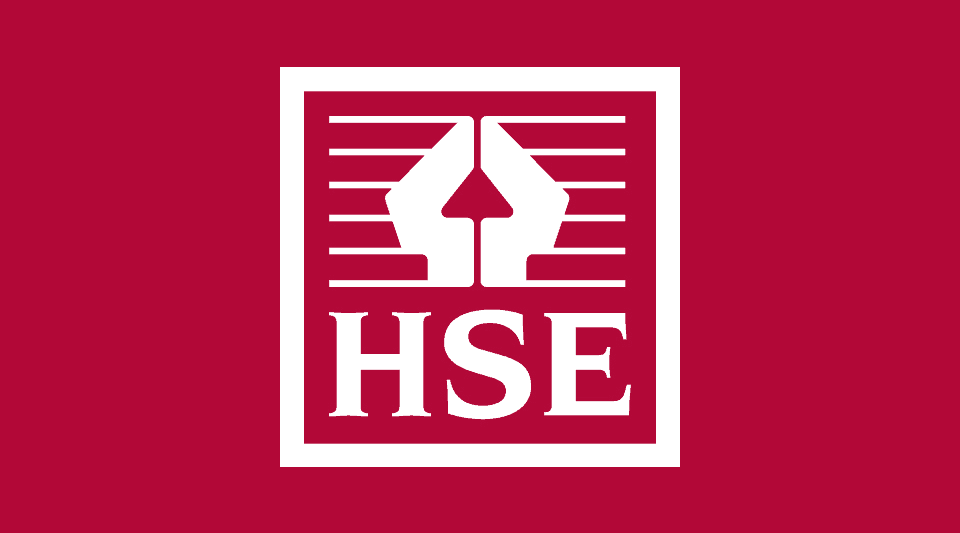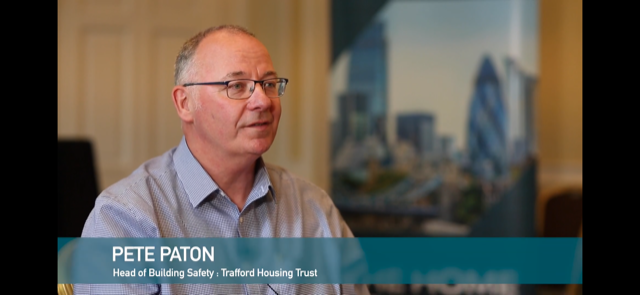Latest from HSE

An update from Dame Judith Hackitt
More than 3 years ago, in July 2017 I started my independent review of Building Safety and Fire Regulations in the wake of the tragic fire at Grenfell Tower.
In those first few weeks I interviewed many people and almost without exception they told me that the current regulatory system needed radical change. The people I talked to also expressed doubts about whether the system would actually change as a result of my review.
Three and a half years on and we now know that radical change is on its way and the doubts expressed were unfounded. Given the scale of the tragedy at Grenfell which had led to my review the momentum for change was greater than it had ever been before.
After my final report was published in May 2018, my involvement continued when I was asked to chair the Industry Safety Steering Group. We brought together very senior people from a range of industry backgrounds to challenge the industry to accept the need for culture change and to adopt new practices ahead of legislation mandating them to do so.
Over the last 2 years or so we’ve heard some really encouraging stories of the progress people are making. These are from the people who recognise the need to change and want to do the right thing now, not wait for legislation to make them do it. But of course, we’ve also heard from others who haven’t changed yet and who offer a variety of explanations – “not my problem to fix”, “tell me what to do”.
The thing that makes the difference between those that are getting on with making change and those who are holding back is not about resources or competence or clarity – it’s all about leadership. So, we need many more companies and organisations to step up and show leadership.
I am delighted that the Building Safety Bill is about to make its passage through Parliament and that the new Building Safety Regulator has been announced and will be part of HSE. There can no longer be any excuse for holding back or doubting that things are going to change. There is still a huge amount to do to achieve this once in a generation change – by everyone involved and through the Transition Board we will maintain the pressure to deliver the new regulatory regime and the new regulator as soon as is possible. We meet monthly and will continue until the new regime is up and running.
In the coming months I want us to focus on the positive outcomes that this new regime will deliver – safer homes for residents is of course front and centre but this is also a chance for the whole built environment sector to raise its game.
Focus on: Industry’s contribution to the setting up of the shadow Building Safety Regulator
In this month’s edition we will look at how businesses like yours are helping the Ministry of Housing, Communities and Local Government (MHCLG) and the Health and Safety Executive (HSE) to develop the policies and processes of the new Building Safety Regulator.
Industry practices are changing and there is huge interest in the new regime. To help inform our thinking, raise awareness and turn policy into practice we are being supported via the early adopter’s scheme.
Early adopters’ group
The Early Adopters Group was developed by Government to support the industry in driving forward the cultural changes needed to achieve a safer building system now, and in the future.
The early adopters/charter founders have been working with the MHCLG to trial and test proposed policy options for the new building safety regulatory system, participating in opportunities to share their experience of improving building safety with the wider industry.
There are currently twelve early adopters comprising of eight industry organisations: Barratt Developments, Kier, L&Q, Peabody, Salix Homes, United Living, Wates and Willmott Dixon and four Local Authorities Birmingham City Council, London Borough of Camden, Manchester City Council and the London Boroughs of Richmond and Wandsworth.
Paul Mooney, Service Director of Asset Management from Salix homes explains how they have been supporting the scheme:
“Salix Homes have been assisting the HSE in their work as the new Regulator. We have been involved in trials of the new regime including the development of the Safety Case Report and the new Mandatory Occurrence Reporting system.
“In addition, we have been assisting in the development of a Risk Prioritisation tool to help the sector manage their stock. As an early adopter, we feel it is our duty to assist with these trials and testing to help develop and improve the new Building Safety regime however, we are also learning from the experience and are using this opportunity to pass good practice and case studies to the wider sector.”
Tim Galloway, HSE’s Deputy Director of the Building Safety Programme explains the importance of the group to the development of the shadow Regulator:
“The support of Early Adopter group has been instrumental in helping to inform the policies that will shape the new regime. Colleagues from MHCLG, the Local Government Association, the National Fire Chiefs Council and HSE have all been working closely with early adopter organisations on key features such as the development and assessment of safety cases.
“The everyday experience and insights of the early adopters are being used to help ensure that the legislative requirements can be implemented in a practical way, improving safety in higher risk buildings and helping residents to feel safe in their homes.”
Can you help us?
Participants are needed for HSE research: Understanding BSR duty-holders.
What we are doing and how you can take part
If you will be a duty-holder under the new BSR we would like you to take part in a new research project. We are seeking input from:
- Clients and developers
- Architects and other building design professionals
- Contractors
- Building owners
- Property managers and others involved in ongoing maintenance and safety.
Can you give an hour of your time to talk to Kantar Public, an independent research agency commissioned by HSE, about how your role may be affected by the new BSR?
This will be arranged at your convenience and held by ‘phone or video call. Please note; everything you tell us will be confidential. You and your organisation will not be identified in the research outputs.
Our aim is to understand current working practices and how these may be impacted by the BSR. This will contribute to HSE understanding the perspectives and needs of industry regarding the BSR and will help to inform policy advice, guidance and support once the BSR is in place.
To express an interest in taking part please fill in this short survey.
In other news of interest
Carbon Monoxide consultation: Your opportunity to be heard
On 17 November, the Government published a consultation proposing to extend the Smoke and Carbon Monoxide Alarm Regulations (England) 2015 and the provisions in Building Regulations Approved Document J for carbon monoxide alarms.
MHCLG are now consulting on a comprehensive set of proposals to extend regulations to require smoke and carbon monoxide alarms in social housing, to make carbon monoxide alarms mandatory in rentals with heating of any fuel type and to require carbon monoxide alarms upon the installation of a fixed heating appliance of any fuel type in any home.
This consultation is being launched alongside publication of their Social Housing White Paper.
Please provide your views here.
Event Calendar: Where will we be and where can people see us?
- 9 Dec 2020 – NHC Tenant Panel conference
- 26 January 2021 – NHF (National Housing Federation) Excellence in Housing Virtual Conference
- 22 February 2021 – NHF (National Housing Federation) Building and Fire Safety in Housing Virtual Conference
More information
Key documents from this e-bulletin edition and further documents that explain building safety reform.
- Building Regulations and Fire Service procedural Guide
- Industry Safety Steering Group’s (ISSG) second report
- Letter from the Minister of State for Building Safety
to Dame Judith Hackitt in response to the ISSG second report - Independent Review of Building Regulations and Fire Safety: final report
- Draft Building Safety Bill
the draft Bill in full - Written Ministerial Statement about the draft Building Safety Bill
- Remediation of non-ACM buildings
information relating to the Building Safety Fund for the remediation of unsafe non-ACM cladding systems - Fire Safety Order consultation
- buildingasaferfuture.org.uk



